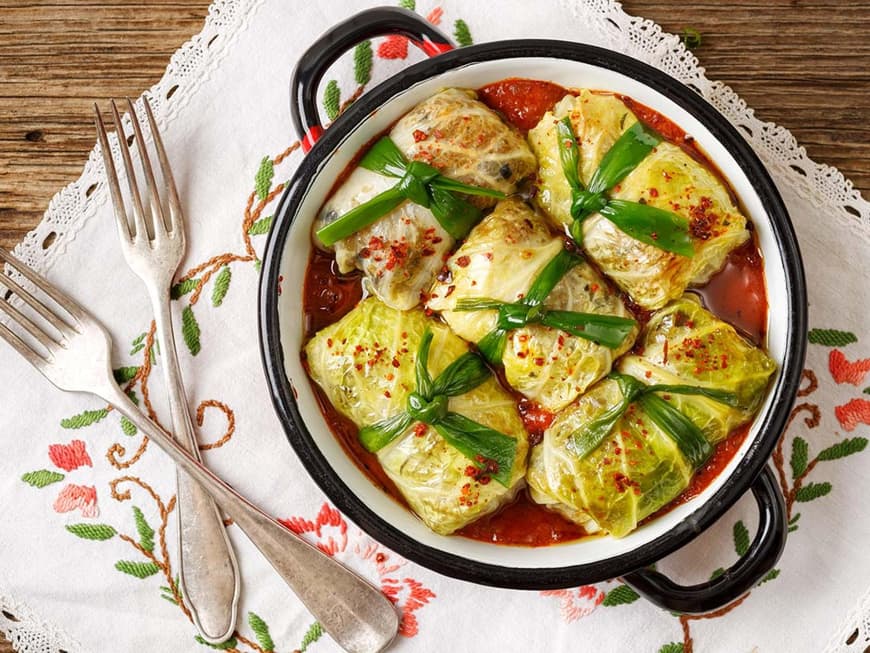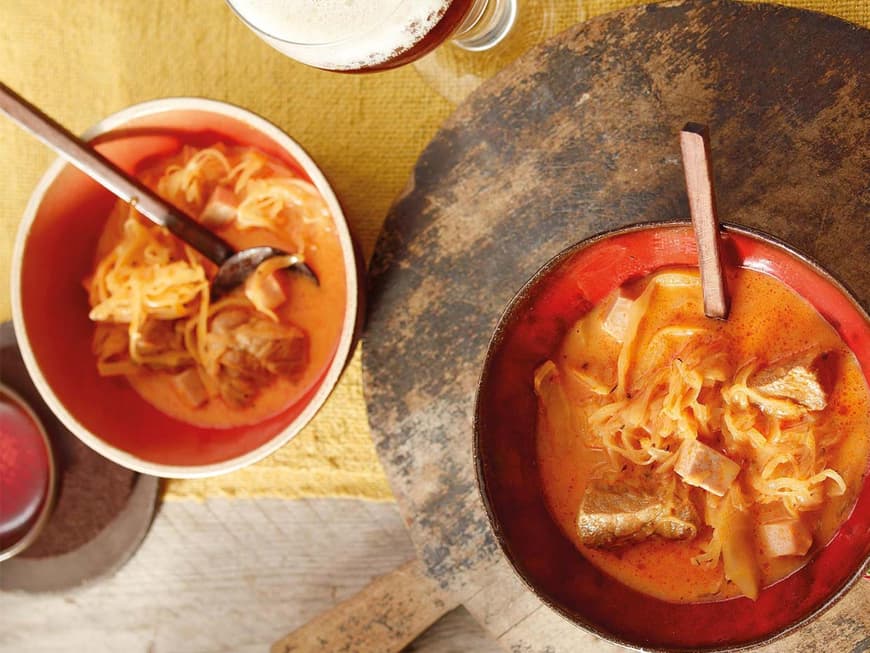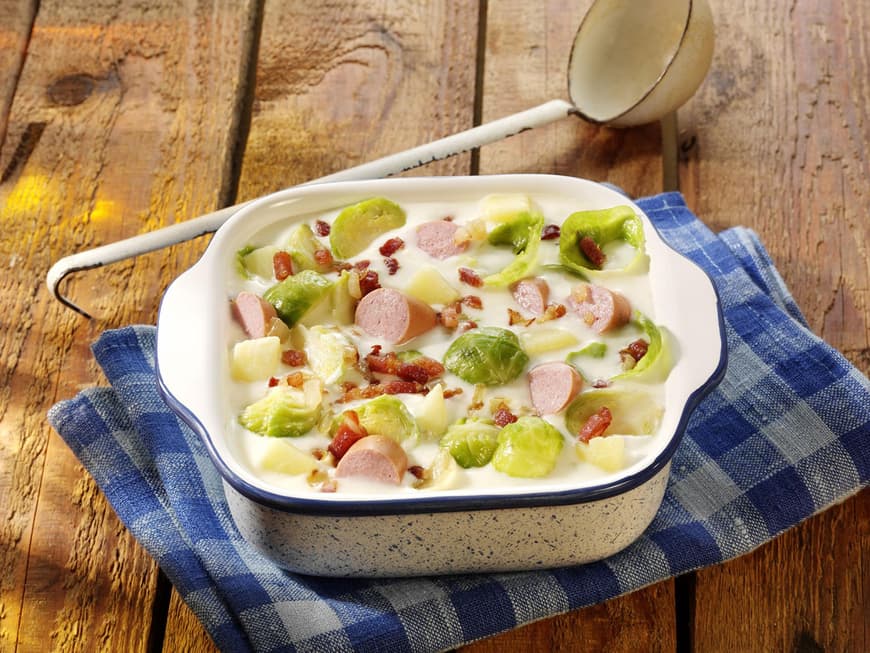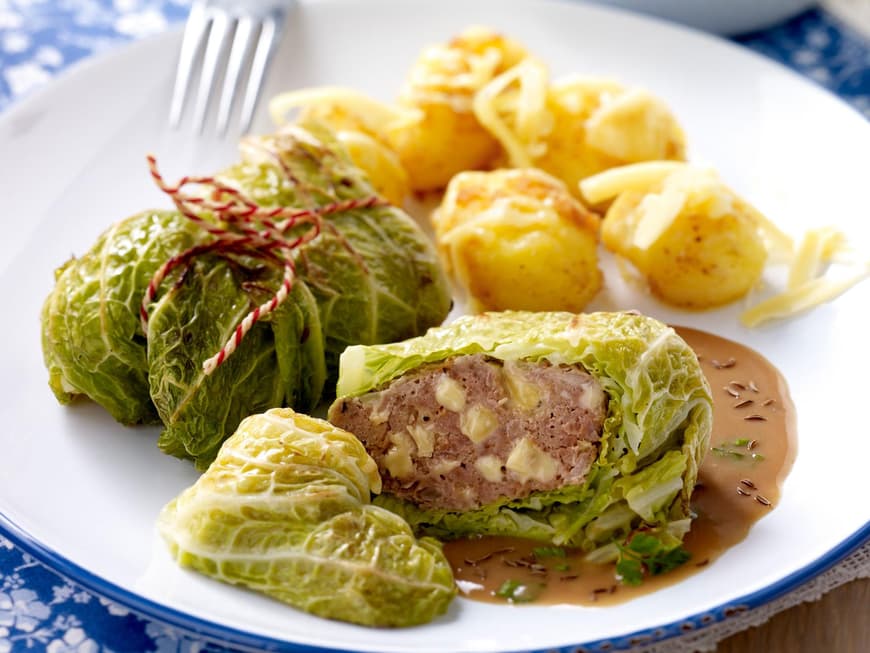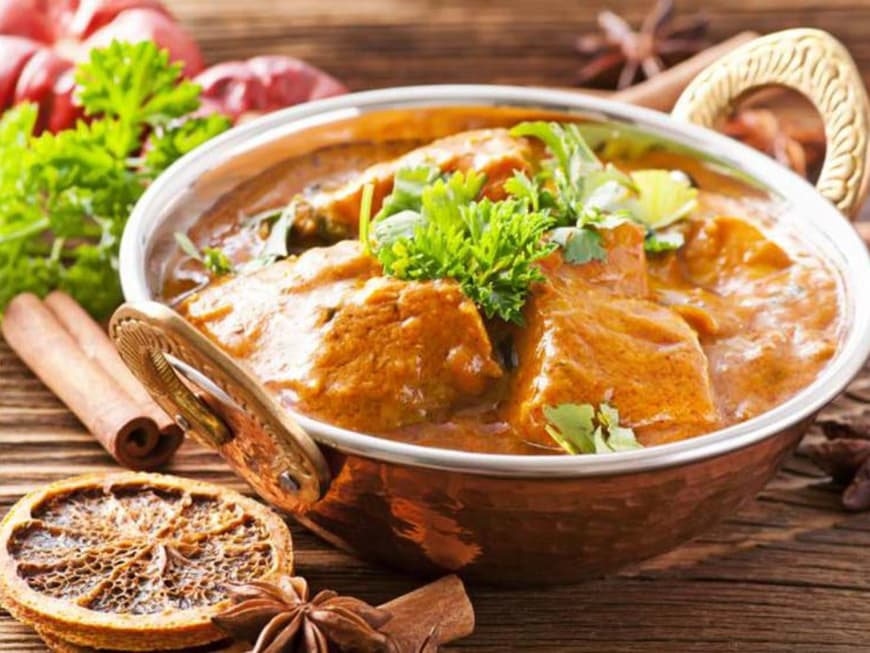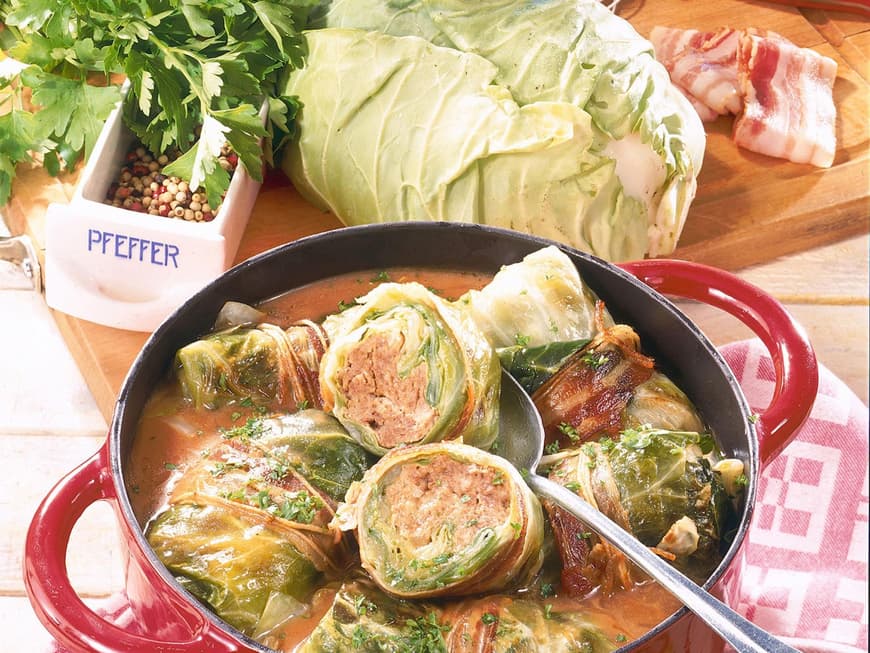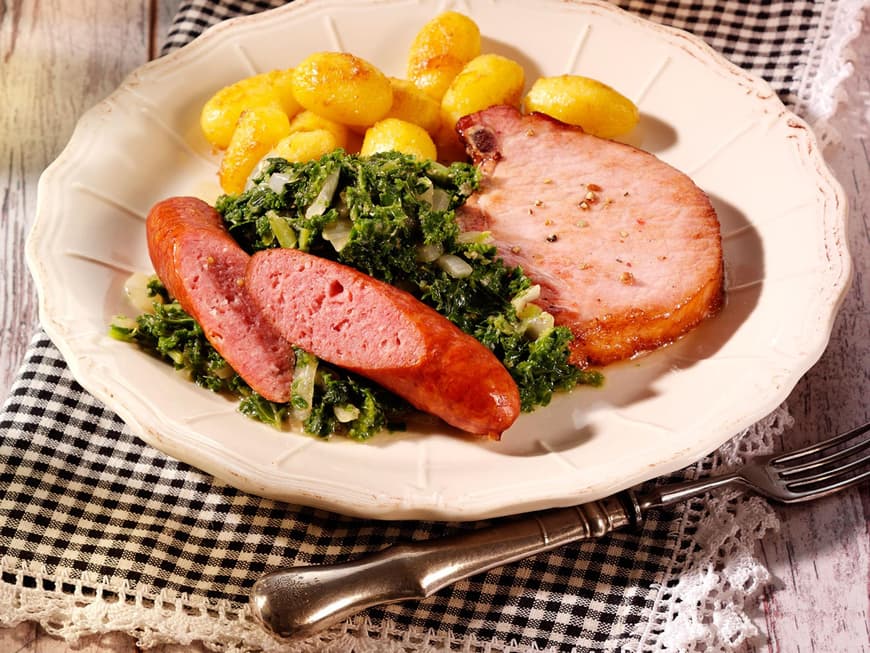Season for delicious cabbage dishes
Autumn and winter are a very culinary time of year, because the delicious cabbage season with hearty dishes spoils our palates! Varieties such as kale taste best after the first frost - served with cabbage sausage, fried potatoes and mustard, the cabbage dish is a classic. Some cabbage varieties already enrich our menu in summer: kohlrabi, cauliflower or broccoli can be used to conjure up light cabbage dishes or served as side vegetables. Tip: Add a dab of butter to the cooked vegetables at the end. Sunflower or pumpkin seeds roasted in a pan without fat also taste good with this dish. Cabbage season at a glance:
- Cauliflower: June to October
- Broccoli: June to October
- Flower sprouts: October to December
- Chinese cabbage: August to November
- Kale : November to December
- Kohlrabi: May to October
- Romanesco: June to October
- Brussels sprouts : October to January
- Red cabbage : September to November
- Pointed cabbage: May to June
- White cabbage: September to November (summer cultivation May and June)
- Savoy cabbage : September to November (summer cultivation May and June)
Buying and storing cabbage correctly
Make sure you buy fresh cabbage for your cabbage dishes, as old cabbage tastes musty. In addition, stored produce loses valuable vitamins over time. You can easily tell the difference between fresh and old produce. Only buy cabbage when ...
- ... leaves and cabbage look strong and fresh, are crisp and firm. Yellowish, wilted leaves and cabbage that feels unreasonably soft or shriveled are no-goes!
- ... the stalk looks as fresh as possible, i.e. not very dried out. The stalk of old cabbage is grayish.
- ... Cauliflower has white florets and broccoli has green florets. If they are yellowish or brown, please keep your hands off!
Tip: If possible, buy organic produce, as pesticides are sometimes still used heavily in conventional cultivation.
Storage
If you have a cool cellar, you can of course store cabbage there. However, you will retain more vitamins and minerals if you freeze cabbage. To do this, it is cleaned, cut and blanched - this keeps it firm to the bite. If you like soft red cabbage, for example, you don't need to blanch it. Cabbage will keep for a few days in the fridge. Remove plastic packaging (this is often the case with broccoli) - the vegetables quickly become moldy underneath
Preparing cabbage dishes
To clean red, white or savoy cabbage, remove the outer one or two leaves as required. Then cut the cabbage into pieces with a sharp knife, remove the stalk in a wedge shape and cut out the thick ribs from the leaves. Depending on the recipe, the cabbage is then finely or roughly cut into strips, pieces etc. and washed. With Brussels sprouts, the outer leaves, which may not be quite so pretty, are also removed and the stalk cut off. To ensure that Brussels sprouts cook evenly, the florets should be the same size if possible. Otherwise, cut very large florets in half. For Brussels sprouts and broccoli, separate the florets from the stem. Do not throw away the broccoli stalk: You can peel it and eat it too. For roulades, choose nice leaves with ribs that are not so large. Blanch them before stuffing and wrapping so that they can be bent.
Cabbage dishes are easier to digest if you put them in the freezer for about two days before preparing them. Or you can add a little caraway to the dish, which also makes cabbage dishes easier to digest. Aniseed and fennel are also said to help.
Tip: No matter which cabbage you use: It smells. Simply add a dash of vinegar to the cooking water to reduce the strong smell.
Low in calories, healthy and rich in vitamins and nutrients
Cabbage contains plenty of vitamins, especially vitamin C (around 65 milligrams/100 grams of raw cabbage on average). This covers half of an adult's daily requirement, and even two-thirds for women. The vitamin C is retained during cooking: The composition of special co-enzymes creates a biochemical compound that does not destroy the vitamin C. In the cold season, red, white or green cabbage is therefore not only a versatile vegetable to cook with, it is also an excellent source of vitamin C.
This super vegetable also contains minerals and fiber as well as bioactive substances: so-called glucosinolates strengthen the immune system, prevent colds, lower chloesteria levels and keep the intestinal flora healthy - especially sauerkraut, because lactic acid bacteria can kill germs. Cabbage is also said to have an anti-cancer effect. When it comes to minerals, calcium plays a particularly important role: 250 g, which corresponds to one portion of food depending on the dish, contains as much calcium as two glasses of milk. No other vegetable can do that! On average, cabbage contains just 25 kcal/100 grams - yet another good reason to serve cabbage dishes regularly! And last but not least, cabbage also has an external healing effect - cabbage compresses for sore throats, skin infections and joint pain are tried and tested household remedies!

